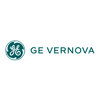


i
Tata Power
Proud winner of ABECA 2024 - AmbitionBox Employee Choice Awards
Filter interviews by
Tata Power Diploma Trainee Engineer Interview Questions, Process, and Tips
Tata Power Diploma Trainee Engineer Interview Experiences
2 interviews found
I applied via LinkedIn and was interviewed in Oct 2024. There was 1 interview round.
(2 Questions)
- Q1. What is transformer?
- Ans.
A transformer is a static electrical device that transfers electrical energy between two or more circuits through electromagnetic induction.
Consists of two or more coils of insulated wire wound around a core
Primary coil receives electrical energy and induces a magnetic field in the core
Secondary coil receives the magnetic field and converts it back into electrical energy
Used in power distribution, voltage regulation, a...
- Q2. What is transformer principle?
- Ans.
Transformer principle is based on the phenomenon of electromagnetic induction, where changing magnetic field induces voltage in a coil.
Transformers work on the principle of electromagnetic induction
They consist of two coils, primary and secondary, linked by a magnetic core
When alternating current flows through the primary coil, it creates a changing magnetic field
This changing magnetic field induces a voltage in the se...
Interview Preparation Tips
- Related to electrical
I applied via Campus Placement and was interviewed before Oct 2021. There were 2 interview rounds.
Technical + general aptitude questions , , ,Control system based questions, degree level questions were few
(5 Questions)
- Q1. Related to basics of Transformer
- Q2. Switchgear questions
- Q3. Why electrical engineering
- Ans.
I chose electrical engineering because of my fascination with electricity and its applications in modern technology.
I have always been interested in how electricity works and how it powers our daily lives.
I enjoy learning about the latest advancements in electrical technology and how they can be applied to solve real-world problems.
Electrical engineering offers a wide range of career opportunities, from designing and b...
- Q4. Internship / work experience related questions
- Q5. Different types of protection schemes
- Ans.
Protection schemes are used to safeguard electrical equipment from damage due to faults or abnormal conditions.
Overcurrent protection
Earth fault protection
Differential protection
Distance protection
Under/overvoltage protection
Reverse power protection
Frequency protection
Generator protection
Transformer protection
Interview Preparation Tips
Top trending discussions






Interview questions from similar companies

I applied via Company Website and was interviewed in Jul 2024. There was 1 interview round.
(1 Question)
- Q1. Power plants supply working
- Ans.
Power plants supply electricity to meet the demand of consumers and industries.
Power plants generate electricity through various methods such as burning fossil fuels, nuclear reactions, or renewable sources like wind or solar power.
The electricity generated is transmitted through power lines to homes, businesses, and industries.
Power plants play a crucial role in ensuring a reliable supply of electricity to meet the ne...

Diploma Trainee Engineer Interview Questions & Answers
Siemens Energyposted on 28 Nov 2023
I applied via Campus Placement and was interviewed in May 2023. There were 3 interview rounds.

About substation details, Components working
Preparation of interview with best regards
Interview Preparation Tips
- Substation

I appeared for an interview in Feb 2025, where I was asked the following questions.
- Q1. Why use Electrical CAD? How draw Symbol of perpendicularity
- Ans.
Electrical CAD enhances design accuracy, efficiency, and collaboration in electrical engineering projects.
Improves design accuracy by minimizing human errors.
Facilitates easy modifications and updates to designs.
Enhances collaboration among team members through shared files.
Allows for simulation and analysis of electrical systems before implementation.
Examples include AutoCAD Electrical and EPLAN Electric P8.
- Q2. Kirchhoff current law
- Q3. Vernier caliper
- Q4. Three phase induction motor
- Q5. PLC RLC designing

I applied via LinkedIn
My aptitude test should be taken from Math Science.
(4 Questions)
- Q1. Electrical engineering
- Q2. What is a transformer?
- Ans.
A transformer is an electrical device that transfers electrical energy between two or more circuits through electromagnetic induction.
Transformers are used to increase or decrease voltage levels in electrical circuits.
They consist of two or more coils of wire wrapped around a core made of ferromagnetic material.
Examples of transformers include power transformers used in electrical substations and distribution transform...
- Q3. How does a thermal power plant work ?
- Ans.
A thermal power plant generates electricity by converting heat energy into electrical energy.
Fuel (such as coal, natural gas, or oil) is burned to produce heat
The heat is used to boil water and produce steam
The steam drives a turbine connected to a generator, which produces electricity
The electricity is then transmitted through power lines to homes and businesses
- Q4. What is the difference between high voltage transmission line and low voltage transmission line?
- Ans.
High voltage transmission lines carry electricity over long distances with minimal energy loss, while low voltage transmission lines distribute electricity to homes and businesses.
High voltage transmission lines operate at voltages above 69 kV, while low voltage transmission lines operate at voltages below 69 kV.
High voltage transmission lines are used for long-distance power transmission, while low voltage transmissio...

Interview Questionnaire
1 Question
- Q1. Normal question about personality and job related
Interview Preparation Tips
Experience: Interview was going smoothly & all questions was related my job so it's was easy for me.
Tips: Good knowledge about of wind turbine
Duration: 2 hours
Total Questions: 25
Round: HR Interview
Experience: Interview was completed so easy
Tips: Required nice personality and confidence is must required

Discuss work related questions
(1 Question)
- Q1. Salary discuss and other accommodation
Interview Preparation Tips

I applied via Naukri.com and was interviewed in Mar 2021. There were 4 interview rounds.
Interview Questionnaire
4 Questions
- Q1. What are your roles in your current job
- Ans. Explaned about my roles and responsibilities
- Q2. How do you tackle vibrations in axial fans
- Ans.
To tackle vibrations in axial fans, proper balancing, alignment, and maintenance are essential.
Perform dynamic balancing of the fan blades to minimize vibrations.
Ensure proper alignment of the fan with the motor and the surrounding structure.
Regularly inspect and maintain the fan components to prevent wear and tear.
Use vibration analysis techniques to identify and address any potential issues.
Consider installing vibrat...
- Q3. What are the challenges you faced your job
- Ans. Explained about our ID fan hydro coupling issue
- Q4. What permit system do you follow
- Ans.
We follow a permit system based on the project requirements and local regulations.
Our permit system ensures compliance with safety standards and legal requirements.
We obtain permits for activities such as construction, electrical work, and hazardous material handling.
The specific permit requirements vary depending on the nature of the project and the location.
We work closely with regulatory authorities to ensure timely...
Interview Preparation Tips

(1 Question)
- Q1. How much distribution voltage
- Ans.
Distribution voltage refers to the voltage level at which electricity is distributed from substations to consumers.
Distribution voltage typically ranges from 4 kV to 33 kV for residential and commercial areas.
Higher distribution voltages, such as 66 kV or 132 kV, are used for industrial areas or large consumers.
The choice of distribution voltage depends on factors like distance, load requirements, and cost.
Transformers...
Tata Power Interview FAQs
Tell us how to improve this page.
Tata Power Interviews By Designations
- Tata Power Graduate Engineer Trainee (Get) Interview Questions
- Tata Power Lead Engineer Interview Questions
- Tata Power Team Lead Interview Questions
- Tata Power Safety Officer Interview Questions
- Tata Power Management Trainee Interview Questions
- Tata Power Electrical Engineer Interview Questions
- Tata Power Diploma Electrical Engineer Interview Questions
- Tata Power Intern Interview Questions
- Show more
Interview Questions for Popular Designations
- Diploma Mechanical Engineer Interview Questions
- Diploma Electrical Engineer Interview Questions
- Diploma Apprentice Trainee Interview Questions
- Diploma Electronics Engineer Interview Questions
- Diploma Chemical Engineer Interview Questions
- Diploma Civil Engineer Interview Questions
- Diploma Engineer Trainee - DET Interview Questions
- Diploma Automobile Engineer Interview Questions
- Show more
Tata Power Diploma Trainee Engineer Interview Process
based on 1 interview
Interview experience
Interview Questions from Similar Companies
Fast track your campus placements
Tata Power Diploma Trainee Engineer Reviews and Ratings
based on 6 reviews
Rating in categories
|
Lead Engineer
756
salaries
| ₹3.3 L/yr - ₹12.5 L/yr |
|
Team Lead
227
salaries
| ₹4.5 L/yr - ₹18 L/yr |
|
Assistant Manager
184
salaries
| ₹5 L/yr - ₹20 L/yr |
|
Manager
180
salaries
| ₹9.2 L/yr - ₹27 L/yr |
|
Graduate Engineer Trainee (Get)
144
salaries
| ₹5.5 L/yr - ₹7 L/yr |

Suzlon Group

Adani Group

NTPC

GE Vernova
- Home >
- Interviews >
- Tata Power Interview Questions >
- Tata Power Diploma Trainee Engineer Interview Questions
















